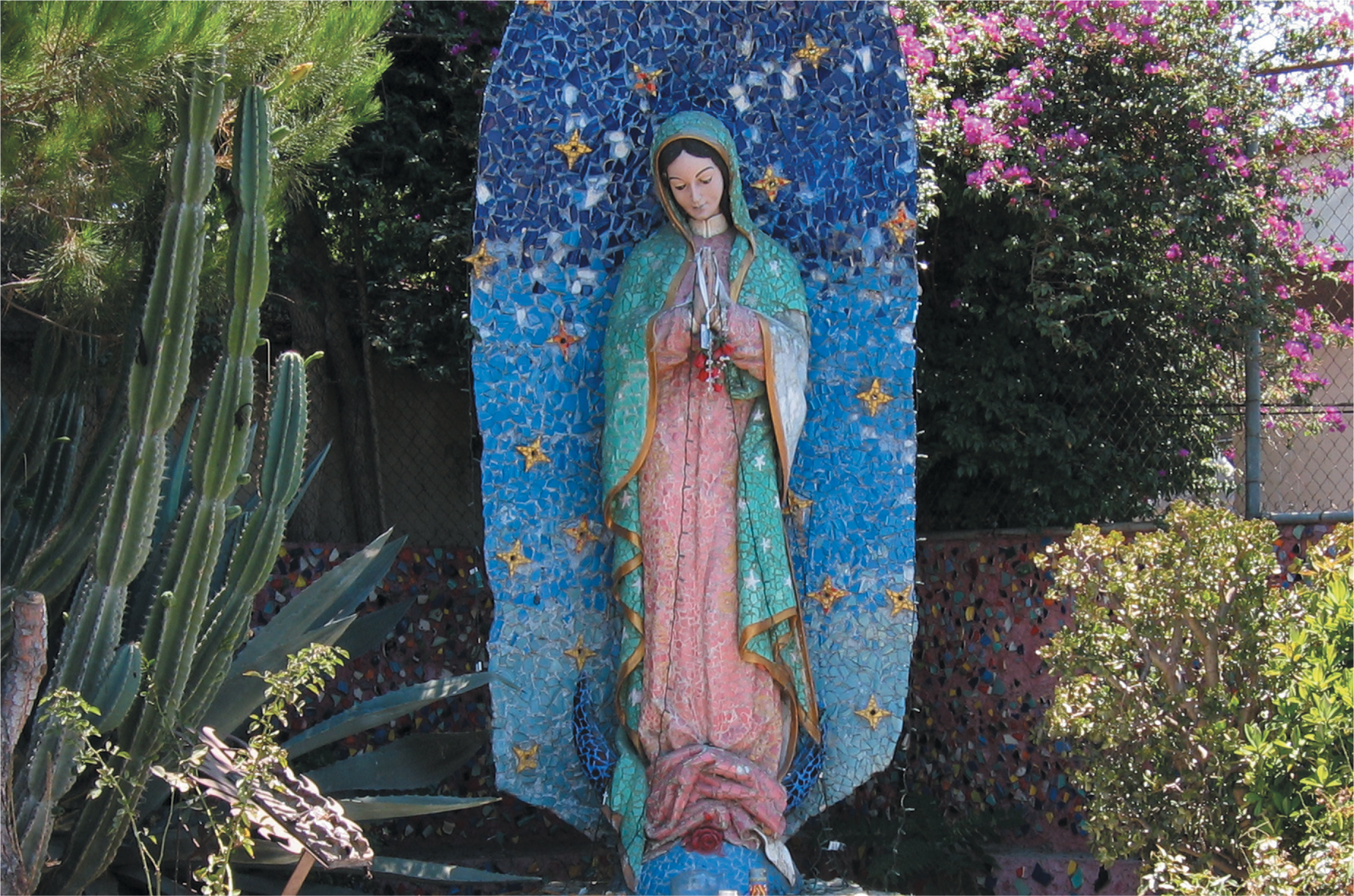Chapter Introduction
179

The Geography of Religion
7
religion A relatively structured set of beliefs and practices through which people achieve mental and physical harmony with the universe and attempt to accommodate or influence the forces of nature, life, and death.
Religion is a core component of culture, lending vivid hues to the human mosaic. For many, religion is the most profoundly felt dimension of their identity. For this reason it is important to clearly state what is meant by the term and provide a sense of the many ways that religion can be manifest in people’s lives. Religion can be defined as a relatively structured set of beliefs and practices through which people seek mental and physical harmony with the powers of the universe. The rituals of religion provide milestones along the course of our lives—birth, puberty, marriage, having children, and death—that are observed and celebrated. Religions often attempt not only to accommodate but also to influence the awesome forces of nature, life, and death. Religions help people make sense of their place in the world.
179
Religion goes beyond a merely pragmatic set of rules for dealing with life’s joys and sorrows. Most religions incorporate a sense of the supernatural that can be manifest in the concept of a God or gods who play a role in shaping human existence, in the notion of an afterlife that may involve a place of rest (or torment) for those who have died, or ideas of a soul that exists apart from our physical body and which may be released, or even born again, once we have died. This sense of the otherworldly is often spatially demarcated through the designation of sacred spaces, such as cemeteries, religious buildings, and sites of encounters with the supernatural.
Each of the world’s major religions is organized according to more or less standardized practices and beliefs, and each is practiced in a similar fashion by millions, even billions, of adherents worldwide. Yet many people also express their religious faith in individual ways. Rituals and prayers can be adapted to fit particular circumstances or performed at home alone. Some religions, including the Taoic religions of East Asia, as well as Hinduism and Buddhism, are largely individual or family-oriented practices. Some people do not observe a widely recognized religion at all. They may be secular, holding no religious beliefs, or express skepticism—even hostility—toward organized religion. They may consider themselves to be faithful but not follow an organized expression of their beliefs. Or they may practice an unconventional belief system, or cult. The term cult is often used in a pejorative sense because it conjures images of mind control, mass suicide, and extreme veneration of a human leader. It is important to keep in mind that the practitioners of belief systems falling outside the mainstream—for example, Mormonism, Scientology, and even Alcoholics Anonymous—strongly object to being labeled cult members.